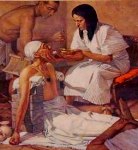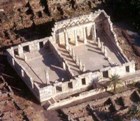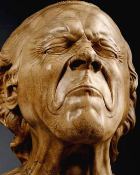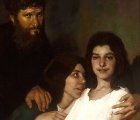Jesus cures the crippled woman
- Jesus was teaching in a synagogue on the Sabbath. Among his listeners was a crippled woman. Her body was bent over and she could not stand straight.
- Jesus called her to the centre of the synagogue and told her she was free to stand tall. She immediately did so.
- There was a debate about whether healing was allowed on the Sabbath. Jesus argued that the Sabbath was a day set aside for praising God, and that it should benefit people, not burden them.
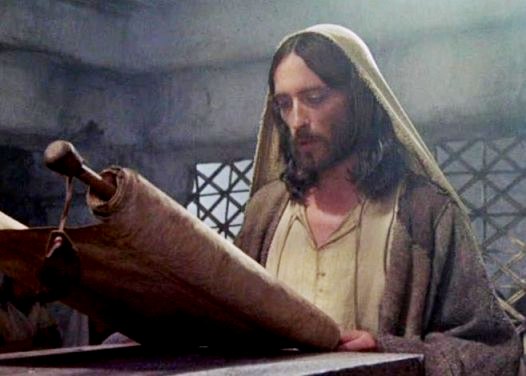
Jesus reads in the synagogue, from the movie ‘Jesus of Nazareth’
Synagogues
There were two ways of worshipping in 1st-century Palestine: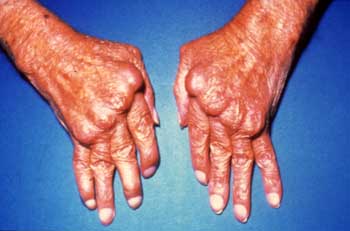
- the Temple in Jerusalem, where people offered sacrifices. It was a sacred place and access was limited
- synagogues, where people met to discuss Scripture. There were thousands of synagogues in Palestine, where people could talk, pray, argue, share information and sing. Visitors were welcome. Sacrifices were not offered.
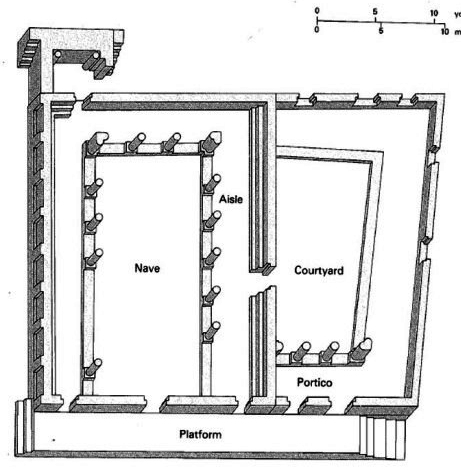
Excavated floor plan of a synagogue at Capernaum – not the actual building in which Jesus cured the woman; that was demolished and built over
There might be a leader of the synagogue, but any man
- who could read,
- who knew the Scriptures, and
- was respected by the community
could be a speaker.
Jesus fitted this description. He was teaching in a synagogue, on the Sabbath.
Jesus spoke from the middle of the room, reading the Scriptures and offering comments; then there was a discussion of the text he had read.
There was a woman there, listening to Jesus. She had been crippled for eighteen years with a spinal deformity that left her body twisted. She may have had acute arthritis.
The people of the time thought that she was crippled because her body had been taken over by a spirit or demon.
Spirits & demons
Demons? Surely not. But ask yourself
- what causes disease?
- why do we do silly or destructive things, when we know we shouldn’t?
- why are there earthquakes or storms?
People in the ancient world believed these things were caused by ‘spirits’ or ‘demons’.
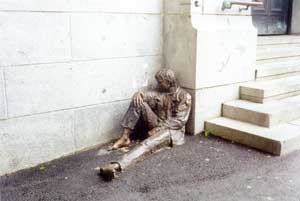
There are many different ways
of being crippled
Spirits and demons appear frequently in Luke’s gospel, in different guises.
- Jesus is conceived by the Holy Spirit (1:35);
- at Jesus’ baptism, the Holy Spirit descends on him in the form of a dove (3:21);
- Jesus is tempted in the desert by a spirit or demon (4:1-13);
- Jesus teaches that ‘the Spirit of the Lord is upon me’ (4:18);
- Jesus frees people from unclean spirits and demons that cause cosmic disorder.
Luke shows Jesus as being
- inspired by the Holy Spirit
- able to control spirits that (Luke believes) cause illness, either mental or physical.
Save
Jesus cures the crippled woman
What was wrong with her? How was she suffering?
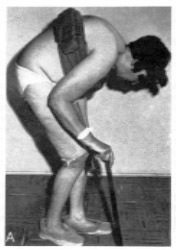 The woman in the story could not straighten her body, so she could not look upwards or forwards. The shape of her body, always bent over towards the ground, was a symbol of people who are stunted by ignorance, prejudice, anger or malice.
The woman in the story could not straighten her body, so she could not look upwards or forwards. The shape of her body, always bent over towards the ground, was a symbol of people who are stunted by ignorance, prejudice, anger or malice.
As it was, she could see only the dirt at her feet, as many people can see only bad things.
- She could not look up and see the possibilities before her.
- She could not see the smiles on people’s faces.
- She could not see the sky.
- She could only see downwards to the dirt.
Jesus called her over into the center of the synagogue, from the side where she had been standing.
This was an unusual thing to do. Women usually stayed in the side area of the synagogue, sitting on masonry benches against the wall.
Jesus must have walked across and led her to the center of the room.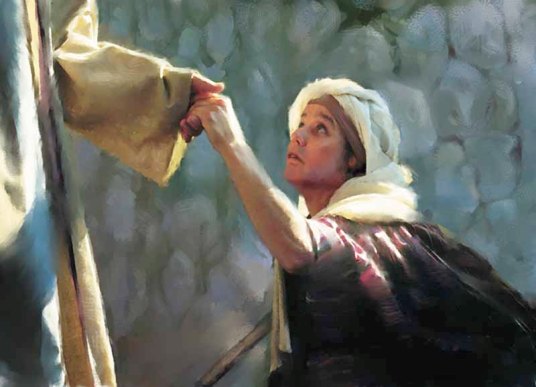
He told her that she was free from whatever had deformed her body. He put his hands on her, and immediately she was able to straighten her body.
Now she could look upwards, and see forwards. It was not just her body that was healed, but her mind as well. Her immediate response was to praise God.
Should you heal on the Sabbath?
The leader of the synagogue reminded Jesus that curing of the sick was only permitted on the Sabbath to save a life. After all, there were six other days in the week when healing could be done.
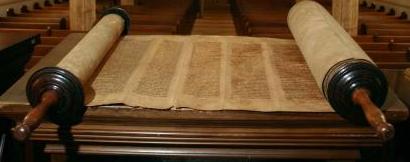
Torah scrolls in a synagogue
The Sabbath should be kept special, set aside as a time for praising God, not to be used for anything else.
This type of debate was common in synagogues in first-century Palestine. Jews have always been fascinated by the precise meaning of the laws in the Torah (the first five books of the Bible) and the exact way that Jews ought to live their lives.
What did Jesus do?
Jesus argued that if you could water an animal on the Sabbath (which was allowed) then you should be able to help a woman who was ill.
His argument is that the Sabbath is a day set aside for people to praise God. If what you are doing praises God, shouldn’t it be allowed?
Jesus was not alone in holding this opinion. Several other Jewish rabbis at that time taught that the Sabbath was made for people’s benefit, and should not be a burden for people.
The story finishes by noting that everyone was happy with the wonderful things that Jesus did. Everyone was rejoicing.
Surely, says the author of Luke’s gospel, what Jesus did is right. He has observed the true purpose of the Law, because people praise God as a result of what he has done.
Themes in the story
- The woman’s twisted body symbolizes people who lack hope, or see only the negatives. With Jesus’ help we can lift our vision upwards towards God, and be hopeful.
- The story inspires us to mentally straighten our selves to a standing position, where we see upwards to God for inspiration.
- Jesus teaches that rules (like observance of the Sabbath) should be treated with respect, but they should not be a straitjacket either.
- For additional information on the lives of women in the Bible, see
Family, work and religion: the family, slaves, women’s tasks, beliefs
Milestones in a woman’s life: Puberty, menstruation, marriage, childbirth, death, burials
Save
Search Box
![]()
See Activities for Bible Study Groups and Schools
______________________________________________
Read about other famous Women of the Bible
Bible Woman – Women of the New Testament
The Crippled Woman is cured by Jesus
Bible Study Resource
© Copyright 2006
Elizabeth Fletcher


